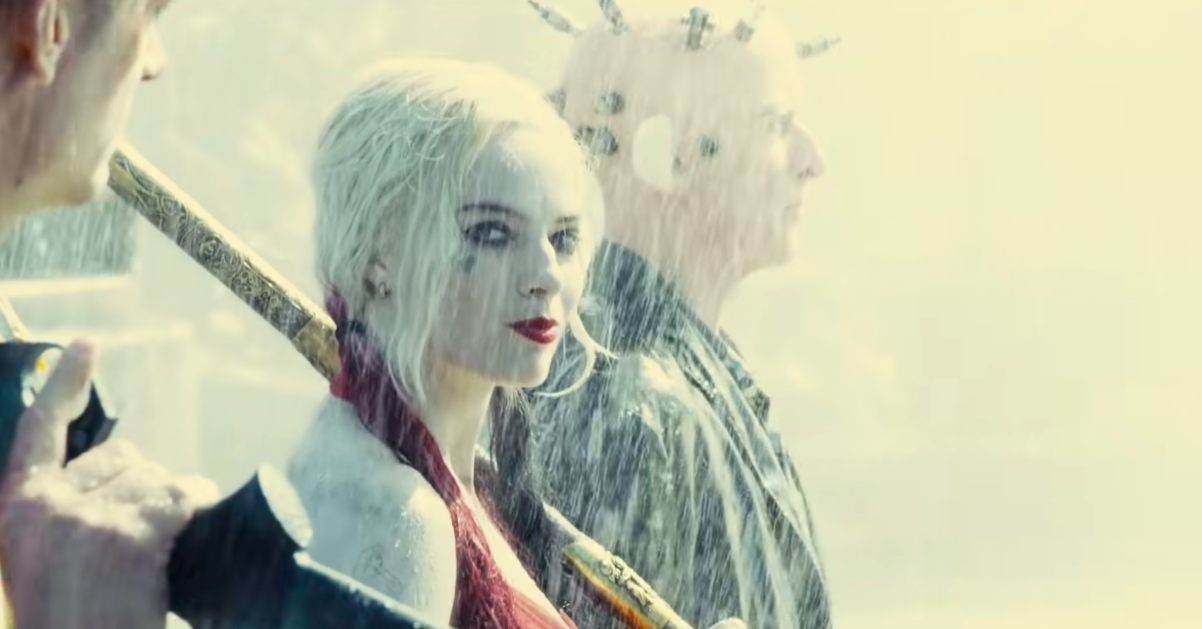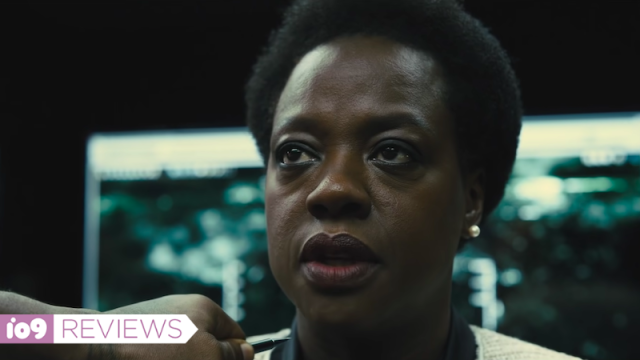As hard as Warner Bros. and James Gunn fought to convince the public that The Suicide Squad wasn’t a proper sequel or reboot of the studio’s previous DC villain-forward film with a nearly identical name, the new movie is both of those things in the most positive sense.
The Suicide Squad — written and directed by Gunn — is undoubtedly its own film with a distinct sense of itself. But it’s also an impressive example of Warner Bros. successfully coming back to a property that’s always been interesting, and putting the right team together to actually turn that property into a compelling feature. While The Suicide Squad’s story is self-contained, it’s not so much so that it feels like it’s meant to exist in a vacuum that erases the existence of Warner Bros. and DC Entertainment’s other live-action films.
Returning characters like Harley Quinn (Margot Robbie), Amanda Waller (Viola Davis), Rick Flagg (Joel Kinnaman), and Captain Boomerang (Jai Courtney) all know one another in the way that on-again/off-again industry colleagues often do, and there are tidbits of the larger world that pop up in small, contextually significant ways. Before The Suicide Squad gets anywhere near close to putting too much energy into reminding you how it’s a very small crossover of sorts, it gets right into the meat of its own multiple, interconnected stories stemming from Waller’s latest covert mission. After a military coup changes the balance of power in Corto Maltese — a fictional South American country also namechecked in 1989’s Batman, Smallville, and Arrow — Waller must insure that a Nazi-era secret laboratory there is destroyed. If you’ve watched the film’s trailers, it’s obvious what the monstrous secret lurking in the Thinker’s Corto Maltesean lab is. But the movie handles its multiple guest stars less as surprises and more as a wild celebration of semi-deep cut characters you might not expect to see get this kind of big-screen treatment.

Never one to get her own hands dirty, Waller puts together the latest incarnations (plural) of Task Force X, her squad of imprisoned villains whose sentences she promises to lessen if they obey her commands. As always, the “Suicide Squad” missions come with the warning that if any of them wander off the beaten path in Corto Maltese, they’ll be murdered remotely, and the movie makes clear how serious that threat is almost immediately to spectacular results. (The movie is very gore-heavy, squeamish people should know.) A member of the team actually having the bomb in their head detonated is just one of the many core elements of creator John Ostrander’s Suicide Squad stories (including Ayer’s movie) that the film hits during its two-hour and 12-minute runtime. But the movie expertly avoids ever feeling like a presentation of the Suicide Squad’s greatest hits by understanding when to poke fun at itself and the larger franchise and how to actually create space for its characters to become compelling.
Along with the return members, the film’s sizable bevy of new characters immediately works to address one of the core issues of the previous film, which was an odd blend of lower power sets matched up against an outsized opponent. Newcomers like Mongal (Mayling Ng), Black Guard (Pete Davidson), Weasel (Sean Gunn), TDK (Nathan Fillion), Javelin (Flula Borg), King Shark (voiced by Sylvester Stallone, physically portrayed by Steve Agee), Savant (Michael Rooker), Bloodsport (Idris Elba), Ratcatcher 2 (Daniela Melchior), Polka Dot Man (David Dastmalchian), Peacemaker (John Cena), and the Thinker (Peter Capaldi) round out the cast as highly expendable characters whose collective presence makes sense for this film.
The Suicide Squad’s ambitions are also every bit as grandiose as its predecessor’s, but where the first film shot for pure otherworldly spectacle almost from the jump, Gunn’s film instead builds to a ridiculous finale by presenting itself as a kind of semi-grounded war movie. However, the countless colourful (literally and figuratively) characters make sure the film and its stakes never feel too heavy. As the Suicide Squad infiltrates Corto Maltese and begins dispatching the locals, the film repeatedly slows down the villains’ present-day violence to offer different kinds of glimpses into their pasts that flesh out their characters. Thankfully, The Suicide Squad knows that no one is interested in yet another superhero montage, and its flashbacks are peppered throughout the film in moments that both make sense and serve to bond the characters together as a team.

One of The Suicide Squad’s more impressive feats is using individual characters’ expendability as a way to underline how none among them can really be considered the “leader” of the film despite the titles that are assigned to various people. Everyone’s meant to listen to Flagg, of course, who’s just as committed to protecting his country as ever. Things always go left in the field, though, and because so many of these people are impulsive psychopaths, it doesn’t take much for them to toss plans out the window, and for the movie to spread its focus around to more of the cast. With new characters like Bloodsport — whose similarities to Will Smith’s Deadshot from the last film are so glaring that The Suicide Squad almost has to crack a joke about it — the plot revisits familiar conflicted villain territory that’s meant to make you sympathise with a killer. With some returners (Harley in particular), The Suicide Squad gets a bit more experimental to an impressive effect. With both Harley and Captain Boomerang, the film leads with the idea that you probably know just enough about them that it doesn’t really need to explain things — like why Harley occasionally hallucinates cartoons, or how Captain Boomerang’s boomerang isn’t just a throwing stick.
Gunn’s fondness for all of these characters is evident in the script — no lack of heart or laughs here — even as they’re being killed off. Indeed, its body count is high and the deaths extremely bloody. And while you won’t feel the DCEU looming over the proceedings, the film’s final action sequence leads to a turn of events that might change how Waller puts Task Force X together in the future. It all works to create the sense that this movie’s the beginning of a new era for the Suicide Squad as a franchise.
This isn’t the first time that DC’s ended up dropping a surprisingly solid movie that could have ended up being a dud. Hopefully, the studio brings this sort of “Hey, let’s try to do this differently” energy to more of its comic adaptations in the future.
The Suicide Squad will hit theatres on August 5.
